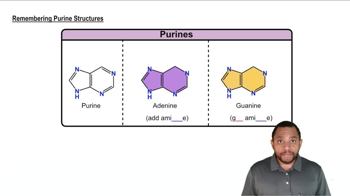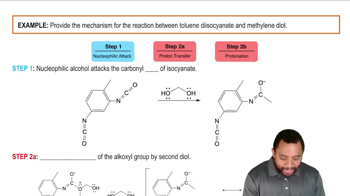Here are the essential concepts you must grasp in order to answer the question correctly.
Basicity of Nitrogen Atoms
In histidine, the basicity of nitrogen atoms is determined by their ability to accept protons. The nitrogen in the imidazole ring can be protonated, making it a basic site, while the other nitrogen is part of a double bond and is less likely to accept a proton due to resonance stabilization. Understanding which nitrogen is basic is crucial for analyzing histidine's role in enzymatic reactions.
Recommended video:
Nitrogenous Bases Concept 3
Resonance Stabilization
Resonance stabilization occurs when a molecule can be represented by multiple valid Lewis structures, distributing electron density across the molecule. In the case of protonated histidine, resonance forms show that the positive charge can be delocalized over the nitrogen atoms and the adjacent carbon atoms, enhancing the stability of the cation. This concept is essential for understanding the stability of charged species in biochemical reactions.
Recommended video:
The radical stability trend.
Proton Transfer Mechanism
Histidine can act as a proton shuttle in enzymatic reactions, facilitating the transfer of protons between different sites. When histidine accepts a proton on its basic nitrogen, it can later donate it from the other nitrogen, effectively transferring protons within the enzyme's active site. This mechanism is vital for many enzymatic processes, as it allows for the regulation of pH and the stabilization of transition states.
Recommended video:
Polyurethane Mechanism Example 1
 Verified step by step guidance
Verified step by step guidance Verified video answer for a similar problem:
Verified video answer for a similar problem:



 2:04m
2:04m